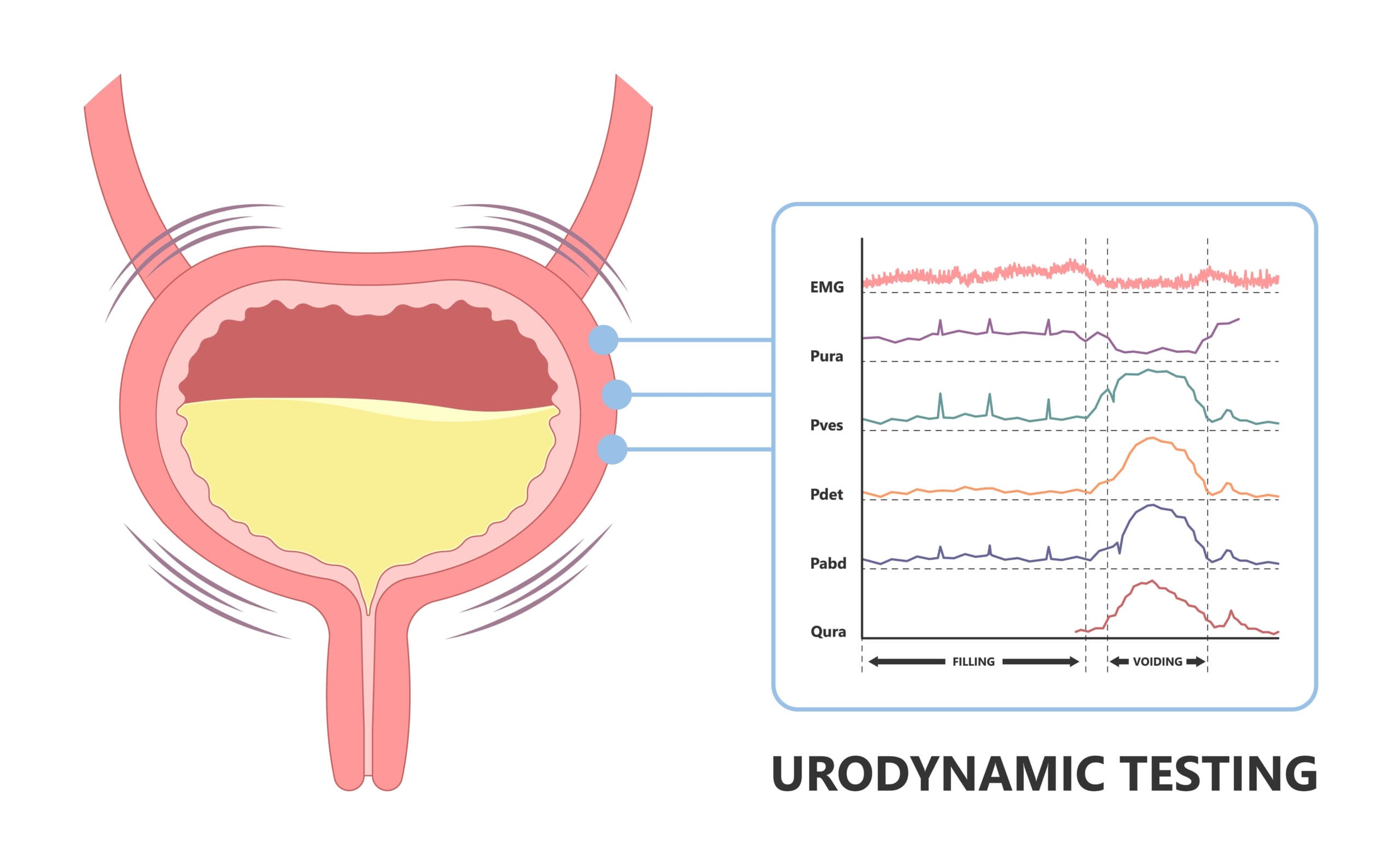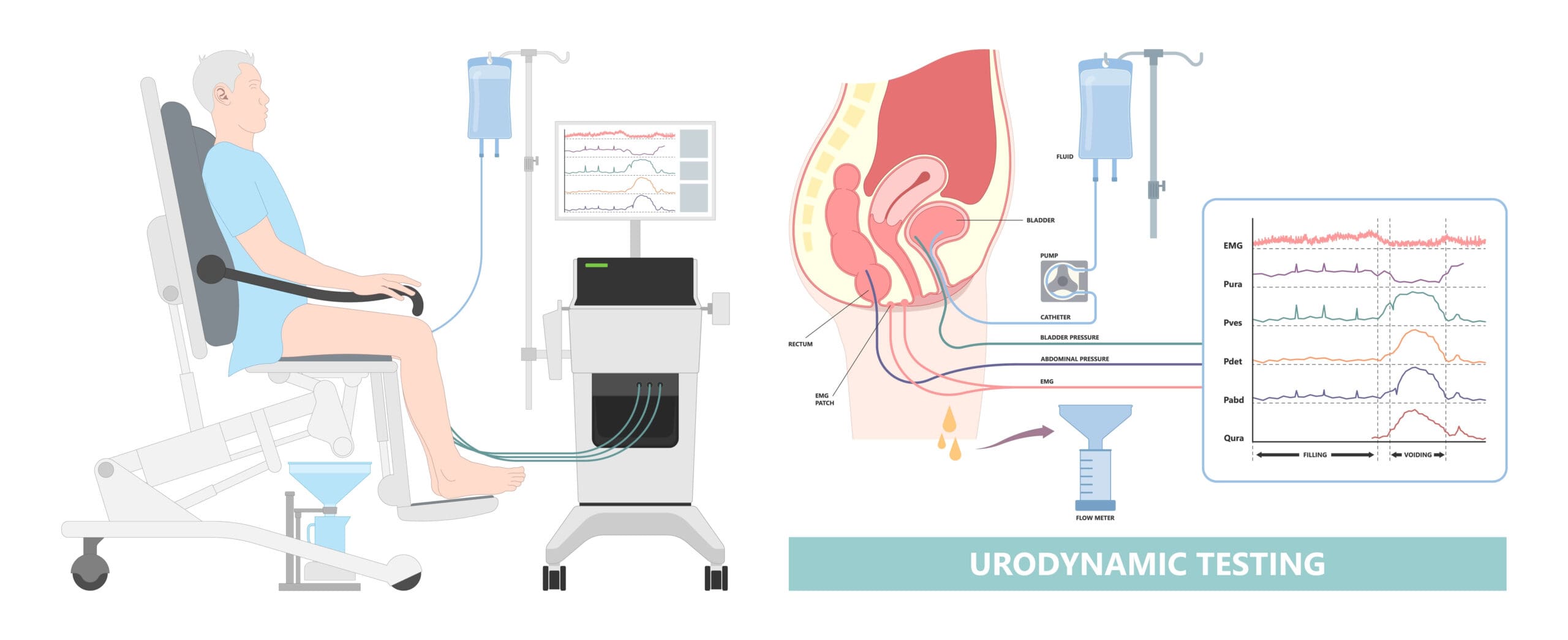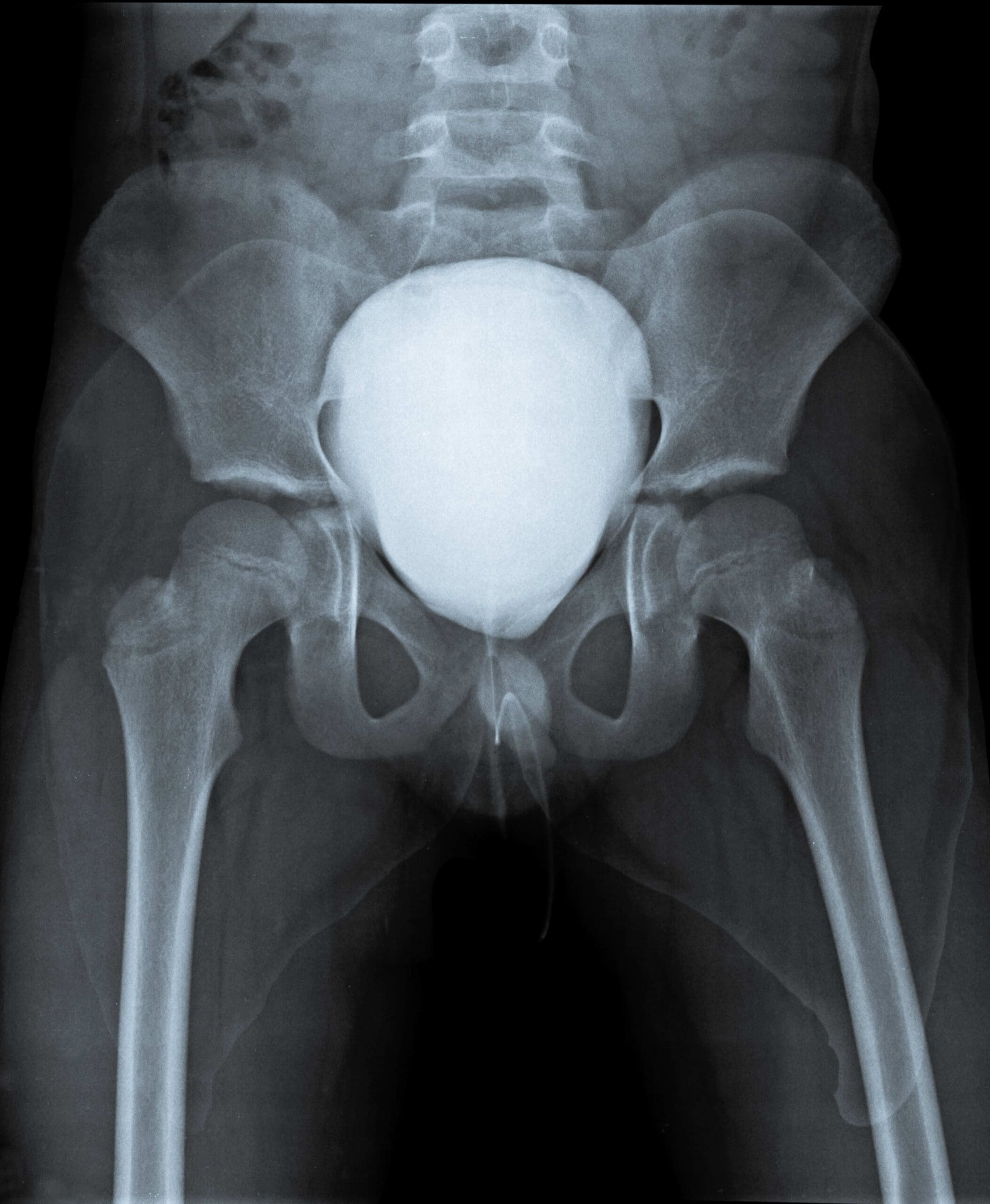Urodynamics Testing: What It Is, Why It’s Important, and What to Expect at UPNT
At Urology Partners of North Texas (UPNT), we understand that bladder problems can be frustrating and impact your daily life. If you’re dealing with urinary incontinence, difficulty urinating, or frequent urges to go, your UPNT doctor may recommend urodynamics testing to get to the root of the issue.
This guide will walk you through the journey of urodynamics testing, explain the difference between video and non-video urodynamics, and help you understand why this test is so important for both men and women.

What Is Urodynamics Testing?
Urodynamics is a set of tests that measure how well your bladder and urethra store and release urine. Think of it as a “stress test” for your bladder—it helps us see what’s working well and what might need attention.
Why Is Urodynamics Important?
Your bladder is supposed to fill, store, and empty urine in a coordinated way. If something goes wrong in that process, it can cause:
- Urine leakage (incontinence)
- Frequent urination
- A weak or slow urine stream
- Difficulty emptying the bladder completely
- Sudden, strong urges to urinate (overactive bladder)
By performing urodynamics testing, your UPNT doctor can pinpoint the cause of your symptoms and create the best treatment plan for you.

Why Might You Need Urodynamics Testing?
For Women:
- 👩 Bladder leakage (Stress Urinary Incontinence) – Do you leak urine when you cough, sneeze, laugh, or exercise? This test can help determine why.
- 👩 Overactive Bladder (OAB) – If you feel constant, urgent urges to urinate, urodynamics can assess bladder muscle function.
- 👩 Pelvic Organ Prolapse – When pelvic organs shift, it can affect the bladder. Urodynamics helps determine how severe the issue is.
- 👩 Difficulty Emptying the Bladder – If you feel like you’re not fully emptying after urinating, this test can help identify the problem.
Urodynamics is a set of tests that measure how well your bladder and urethra store and release urine. Think of it as a “stress test” for your bladder—it helps us see what’s working well and what might need attention.

For Men:
- 👨 Enlarged Prostate (BPH) – Struggling with a slow stream, difficulty starting urination, or incomplete emptying? Urodynamics can measure bladder pressure and prostate impact.
- 👨 Post-Prostate Surgery Incontinence – If you’ve had prostate surgery and now experience urine leakage, this test helps us understand why.
- 👨 Frequent UTIs or Bladder Issues – If you keep getting urinary tract infections or bladder inflammation, this test can check for underlying dysfunction.
- 👨 Neurogenic Bladder – If you have a neurological condition (Parkinson’s, MS, spinal cord injury, diabetes) affecting your bladder, urodynamics helps assess nerve function.
For Both Men & Women:
- Frequent urinary tract infections (UTIs)
- Bladder pain, pressure, or urgency
- Previous bladder surgery complications
- Unexplained urine leakage or retention
The Journey: What to Expect During Urodynamics Testing at UPNT
We know medical tests can feel intimidating, so let’s walk through what your urodynamics experience at UPNT will be like step by step.
Before Your Test
- Be ready to provide a urine sample – This helps us check for infection, as a UTI could require rescheduling the test.
- No major preparation is needed – You can eat, drink, and take medications as normal unless your UPNT doctor advises otherwise.
- Wear comfortable clothing – You may need to change into a gown.
During Your Test
Your UPNT provider will explain everything in detail before starting. The entire test takes about 30–45 minutes.
Step 1
Measuring Urine Flow
- You will urinate into a special toilet or funnel that records your flow speed and volume.
- This helps measure how well your bladder empties on its own.
Step 2
Catheter Placement
- A small, soft catheter is gently placed into the bladder to measure pressure and fill the bladder with sterile water.
- Another tiny catheter may be placed in the rectum (or vagina for women) to compare bladder pressure with abdominal pressure.
Step 3
Bladder Filling & Monitoring
- Sterile water (or saline) is gradually introduced into the bladder through the catheter.
- You’ll be asked to tell us when you first feel the urge to urinate and when your bladder feels full.
Step 4
Voiding Test
- Once your bladder is full, we’ll ask you to urinate while the catheters remain in place.
- This allows us to measure how well your bladder contracts and empties.
Step 5 (If Needed)
Video Urodynamics
- If your UPNT doctor recommends video urodynamics, X-ray or ultrasound imaging will be used to see the bladder and urethra in action.
- A contrast dye may be used for clearer imaging during an X-ray.
Video vs. Non-Video Urodynamics: What’s the Difference?
Non-Video Urodynamics (Standard Testing)
- Uses pressure sensors to measure bladder function.
- Best for diagnosing incontinence, overactive bladder, or retention issues.
- No imaging involved.

Video Urodynamics (Fluoroscopic Urodynamics)
- Same pressure measurements as standard testing.
- Includes real-time imaging (X-ray or ultrasound) to see bladder and urethral function.
- Best for evaluating anatomical issues like blockages, prolapse, or surgical concerns.
Which One Do I Need?
- Most patients have standard urodynamics unless imaging is necessary.
- Video urodynamics is used for complex bladder issues or surgical planning.
After Your Urodynamics Test
- Mild burning or urgency may occur for a few hours.
- Drink plenty of water to flush out the bladder.
- Most people return to normal activities right away.
⚠ Call your UPNT doctor if you experience:
- Severe pain or burning that doesn’t improve.
- Fever or chills (possible infection).
- Difficulty urinating after the test.
FAQs About Urodynamics at UPNT
Is the test painful?
It may feel uncomfortable but should not be painful.
Can I drive home afterward?
Yes, you can drive yourself home after the test.
Will I need anesthesia?
No, this is a quick outpatient test with no sedation required.
How long does the test take?
The full process takes about 30–45 minutes.
How soon will I get my results?
Your UPNT doctor will review the results with you at your follow-up visit, at times the same day of your test.
Why Choose UPNT for Urodynamics Testing?
- Experienced Urologists – Our UPNT specialists are experts in diagnosing and treating bladder conditions.
- State-of-the-Art Equipment – We offer both video and non-video urodynamics for a comprehensive evaluation.
- Comfort-Focused Approach – We strive to make testing as quick, comfortable, and informative as possible.
- Convenient In-Office Testing – No need for a hospital visit—we perform urodynamics right at UPNT.
⚠ Call your UPNT doctor if you experience:
- Severe pain or burning that doesn’t improve.
- Fever or chills (possible infection).
- Difficulty urinating after the test.
Schedule Your Urodynamics Test at UPNT
If you’re experiencing bladder or urinary issues, urodynamics testing can provide answers. The UPNT team is here to guide you through the process and find the best treatment for you.

